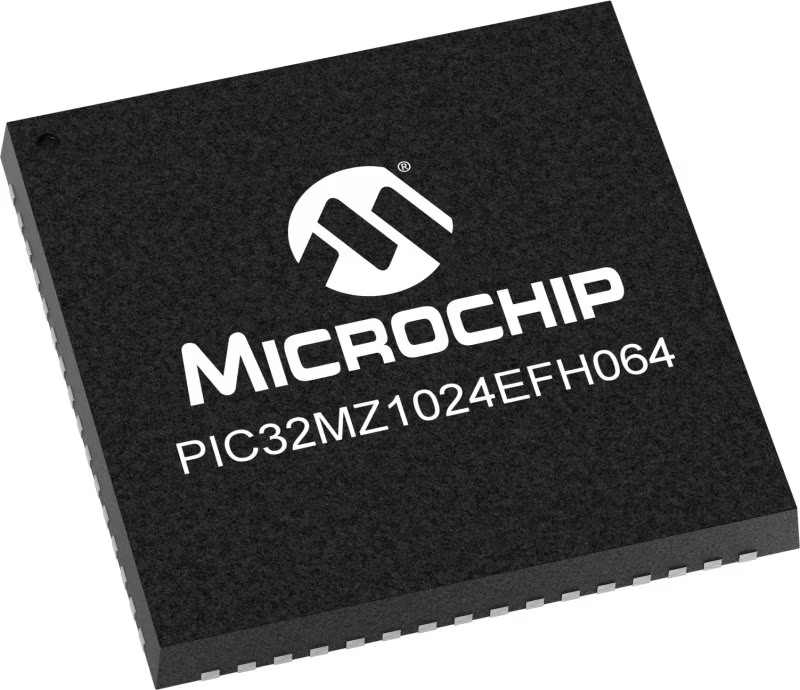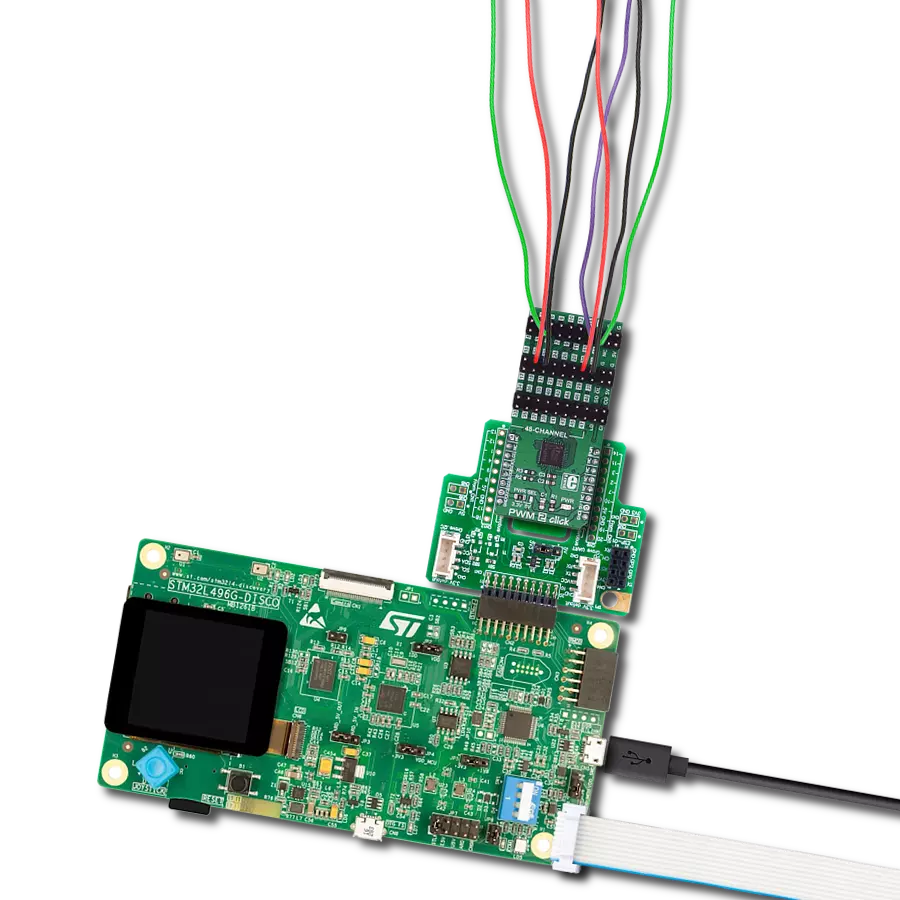Explore the most advanced smart card reader on the market, offering unparalleled protection and ease of use
A
A
Hardware Overview
How does it work?
Smart Card 2 Click is based on the SEC1210, a high-performance single-chip Smart Card controller with a UART interface from Microchip. The SEC1210 is controlled by an enhanced integrated 8051 CPU, with all chip peripherals accessed and managed through the SFR or XDATA register space. Besides, it is fully compliant with the prevailing Smart Card standards (ISO7816, EMV, and PC/SC), keeps up with all requirements for communication bit rate, and includes support for proposed bit rates up to 826Kbps. The SEC1210 power unit is regulated and switched internally, supporting all 5V, 3V, and 1.8V Smart Cards (classes A, B, and C, respectively). The SEC1210 utilizes TrustSpan™ technology, enabling digital systems to communicate securely, process,
move, and store information. A populated onboard card holder supports data processing with 2FF smart cards. An additional connector for external connection also allows the processing of a standard 1FF card, making it ideal for electronic processes such as personal identification, access control (physical and logical access), authentication, and many more. This Click board™ communicates with MCU using the UART interface with commonly used UART RX/TX and operates at 115200 bps by default configuration to transmit and exchange data with the host MCU. The sequence activation/deactivation process itself is possible through software. Still, hardware deactivation is also supported when a card is
pulled out, whereby the required sequence is ensured regardless of software participation. In addition, Smart Card 2 Click also possesses a general Reset feature routed to the RST pin on the mikroBUS™ socket, which puts the module into a Reset state, while a yellow LED indicator labeled SRC represents a Smart Card status indicator. The blinking of this LED indicates that the Smart Card data processing is in progress. This Click board™ can operate with 3.3V and 5V MCUs, while SEC1210 uses only 5V from mikroBUS™ power rail as its primary power supply. However, the Click board™ comes equipped with a library containing functions and example code that can be used as a reference for further development.
Features overview
Development board
PIC32MZ Clicker is a compact starter development board that brings the flexibility of add-on Click boards™ to your favorite microcontroller, making it a perfect starter kit for implementing your ideas. It comes with an onboard 32-bit PIC32MZ microcontroller with FPU from Microchip, a USB connector, LED indicators, buttons, a mikroProg connector, and a header for interfacing with external electronics. Thanks to its compact design with clear and easy-recognizable silkscreen markings, it provides a fluid and immersive working experience, allowing access anywhere and under
any circumstances. Each part of the PIC32MZ Clicker development kit contains the components necessary for the most efficient operation of the same board. In addition to the possibility of choosing the PIC32MZ Clicker programming method, using USB HID mikroBootloader, or through an external mikroProg connector for PIC, dsPIC, or PIC32 programmer, the Clicker board also includes a clean and regulated power supply module for the development kit. The USB Micro-B connection can provide up to 500mA of current, which is more than enough to operate all onboard
and additional modules. All communication methods that mikroBUS™ itself supports are on this board, including the well-established mikroBUS™ socket, reset button, and several buttons and LED indicators. PIC32MZ Clicker is an integral part of the Mikroe ecosystem, allowing you to create a new application in minutes. Natively supported by Mikroe software tools, it covers many aspects of prototyping thanks to a considerable number of different Click boards™ (over a thousand boards), the number of which is growing every day.
Microcontroller Overview
MCU Card / MCU

Architecture
PIC32
MCU Memory (KB)
1024
Silicon Vendor
Microchip
Pin count
64
RAM (Bytes)
524288
Used MCU Pins
mikroBUS™ mapper
Take a closer look
Click board™ Schematic

Step by step
Project assembly
Software Support
Library Description
This library contains API for Smart Card 2 Click driver.
Key functions:
smartcard2_send_ccid- This function sends the CCID command message by using UART serial interfacesmartcard2_read_ccid- This function reads a CCID response or event message by using UART serial interfacesmartcard2_icc_power_on- This function activates the card by performing an ICC power ON command. The device will respond with a data block containing ICC ATR (Answer to Reset) message
Open Source
Code example
The complete application code and a ready-to-use project are available through the NECTO Studio Package Manager for direct installation in the NECTO Studio. The application code can also be found on the MIKROE GitHub account.
/*!
* @file main.c
* @brief Smart Card 2 Click Example.
*
* # Description
* This example demonstrates the use of Smart Card 2 Click board by checking
* the SIM card presence and activating the card on insert. The card should respond
* with an ATR (Answer to Reset) message.
*
* The demo application is composed of two sections :
*
* ## Application Init
* Initializes the driver and enables the device.
*
* ## Application Task
* Reads and parses all CCID messages received from the device. Checks the SIM card presence
* and activates it if it's inserted. The card should respond with an ATR (Answer to Reset) message.
* All data is being logged on the USB UART where you can track their changes.
*
* @note
* This example doesn't parse ATR messages.
* There are some online ATR parsers which could be used for decoding those messages.
* For example: https://smartcard-atr.apdu.fr/
*
* @author Stefan Filipovic
*
*/
#include "board.h"
#include "log.h"
#include "smartcard2.h"
static smartcard2_t smartcard2;
static log_t logger;
static uint8_t icc_status = SMARTCARD2_ICC_ABSENT;
/**
* @brief Smart Card 2 display ccid message function.
* @details This function parses the CCID message and updates the icc_status in the end.
* The results will be displayed on the USB UART.
* @param[in] ccid : CCID message to be parsed.
* See #smartcard2_ccid_t object definition for detailed explanation.
* @return None.
* @note None.
*/
static void smartcard2_display_ccid_message ( smartcard2_ccid_t ccid );
void application_init ( void )
{
log_cfg_t log_cfg; /**< Logger config object. */
smartcard2_cfg_t smartcard2_cfg; /**< Click config object. */
/**
* Logger initialization.
* Default baud rate: 115200
* Default log level: LOG_LEVEL_DEBUG
* @note If USB_UART_RX and USB_UART_TX
* are defined as HAL_PIN_NC, you will
* need to define them manually for log to work.
* See @b LOG_MAP_USB_UART macro definition for detailed explanation.
*/
LOG_MAP_USB_UART( log_cfg );
log_init( &logger, &log_cfg );
log_info( &logger, " Application Init " );
// Click initialization.
smartcard2_cfg_setup( &smartcard2_cfg );
SMARTCARD2_MAP_MIKROBUS( smartcard2_cfg, MIKROBUS_1 );
if ( UART_ERROR == smartcard2_init( &smartcard2, &smartcard2_cfg ) )
{
log_error( &logger, " Communication init." );
for ( ; ; );
}
log_info( &logger, " Application Task " );
}
void application_task ( void )
{
smartcard2_ccid_t ccid = { 0 };
if ( SMARTCARD2_OK == smartcard2_read_ccid ( &smartcard2, &ccid ) )
{
smartcard2_display_ccid_message ( ccid );
}
if ( SMARTCARD2_ICC_PRESENT == icc_status )
{
log_printf( &logger, " Activating card... \r\n" );
smartcard2_icc_power_on ( &smartcard2, SMARTCARD2_POWER_SEL_3V );
Delay_ms ( 100 );
}
}
int main ( void )
{
/* Do not remove this line or clock might not be set correctly. */
#ifdef PREINIT_SUPPORTED
preinit();
#endif
application_init( );
for ( ; ; )
{
application_task( );
}
return 0;
}
static void smartcard2_display_ccid_message ( smartcard2_ccid_t ccid )
{
log_printf( &logger, "---------------------------------\r\n" );
switch ( ccid.type )
{
case SMARTCARD2_EVT_NOTIFY_SLOT_CHANGE:
{
log_printf( &logger, " Message type: Slot change\r\n" );
if ( SMARTCARD2_CARD_ABSENT == ccid.payload[ 0 ] )
{
icc_status = SMARTCARD2_ICC_ABSENT;
}
else if ( SMARTCARD2_CARD_PRESENT == ccid.payload[ 0 ] )
{
icc_status = SMARTCARD2_ICC_PRESENT;
}
break;
}
case SMARTCARD2_CTRL_NACK:
{
log_printf( &logger, " Message type: NACK\r\n" );
log_printf( &logger, " Command not acknowledged\r\n" );
break;
}
case SMARTCARD2_RSP_SLOT_STATUS:
{
log_printf( &logger, " Message type: Slot status\r\n" );
log_printf( &logger, " Slot number: 0x%.2X\r\n", ( uint16_t ) ccid.slot_num );
log_printf( &logger, " Seq number: 0x%.2X\r\n", ( uint16_t ) ccid.seq_num );
log_printf( &logger, " Status: 0x%.2X\r\n", ( uint16_t ) ccid.spec_bytes[ 0 ] );
icc_status = ccid.spec_bytes[ 0 ] & SMARTCARD2_ICC_STATUS_MASK;
log_printf( &logger, " Error: 0x%.2X\r\n", ( uint16_t ) ccid.spec_bytes[ 1 ] );
log_printf( &logger, " Clock status: " );
switch ( ccid.spec_bytes[ 2 ] )
{
case SMARTCARD2_CLK_STATUS_RUNNING:
{
log_printf( &logger, "Running\r\n" );
break;
}
case SMARTCARD2_CLK_STATUS_STATE_L:
{
log_printf( &logger, "Stoped in state L\r\n" );
break;
}
case SMARTCARD2_CLK_STATUS_STATE_H:
{
log_printf( &logger, "Stoped in state H\r\n" );
break;
}
default:
{
log_printf( &logger, "Unknown\r\n" );
break;
}
}
break;
}
case SMARTCARD2_RSP_DATA_BLOCK:
{
log_printf( &logger, " Message type: Data Block\r\n" );
log_printf( &logger, " Payload size: %lu\r\n", ccid.payload_size );
log_printf( &logger, " Slot number: 0x%.2X\r\n", ( uint16_t ) ccid.slot_num );
log_printf( &logger, " Seq number: 0x%.2X\r\n", ( uint16_t ) ccid.seq_num );
log_printf( &logger, " Status: 0x%.2X\r\n", ( uint16_t ) ccid.spec_bytes[ 0 ] );
icc_status = ccid.spec_bytes[ 0 ] & SMARTCARD2_ICC_STATUS_MASK;
log_printf( &logger, " Error: 0x%.2X\r\n", ( uint16_t ) ccid.spec_bytes[ 1 ] );
log_printf( &logger, " Chain parameter: 0x%.2X\r\n", ( uint16_t ) ccid.spec_bytes[ 2 ] );
if ( ccid.payload_size )
{
log_printf( &logger, " Payload (ATR data as response to power on):\r\n" );
for ( uint32_t cnt = 0; cnt < ccid.payload_size; cnt++ )
{
log_printf( &logger, " %.2X", ( uint16_t ) ccid.payload[ cnt ] );
}
log_printf( &logger, "\r\n" );
}
break;
}
default:
{
log_printf( &logger, " Message type: 0x%.2X\r\n", ( uint16_t ) ccid.type );
log_printf( &logger, " Payload size: %lu\r\n", ccid.payload_size );
log_printf( &logger, " Slot number: 0x%.2X\r\n", ( uint16_t ) ccid.slot_num );
log_printf( &logger, " Seq number: 0x%.2X\r\n", ( uint16_t ) ccid.seq_num );
log_printf( &logger, " Spec bytes: 0x%.2X, 0x%.2X, 0x%.2X\r\n", ( uint16_t ) ccid.spec_bytes[ 0 ],
( uint16_t ) ccid.spec_bytes[ 1 ],
( uint16_t ) ccid.spec_bytes[ 2 ] );
if ( ccid.payload_size )
{
log_printf( &logger, " Payload:\r\n" );
for ( uint32_t cnt = 0; cnt < ccid.payload_size; cnt++ )
{
log_printf( &logger, " 0x%.2X", ( uint16_t ) ccid.payload[ cnt ] );
if ( 7 == cnt % 8 )
{
log_printf( &logger, "\r\n" );
}
}
log_printf( &logger, "\r\n" );
}
break;
}
}
if ( SMARTCARD2_ICC_ABSENT == icc_status )
{
log_printf( &logger, " ICC status: ABSENT\r\n" );
}
else if ( SMARTCARD2_ICC_PRESENT == icc_status )
{
log_printf( &logger, " ICC status: PRESENT\r\n" );
}
else if ( SMARTCARD2_ICC_ACTIVE == icc_status )
{
log_printf( &logger, " ICC status: ACTIVE\r\n" );
}
log_printf( &logger, "---------------------------------\r\n\n" );
}
// ------------------------------------------------------------------------ END
Additional Support
Resources
Category:Interface
































